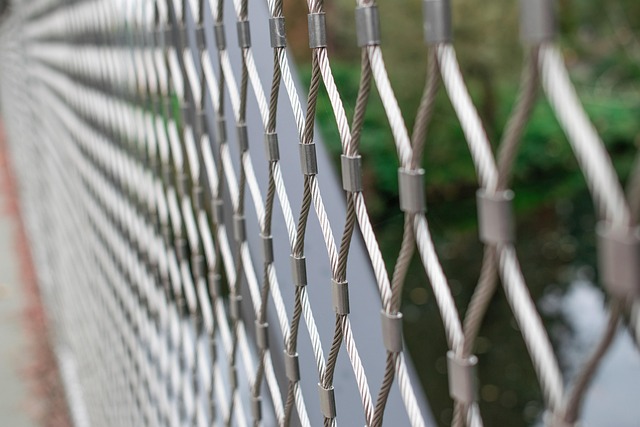In New Bedford, MA, privacy fences stand as both functional and aesthetic enhancements to residential properties. This comprehensive guide delves into the world of privacy fence installation, offering insights into the benefits and diverse types available. From wood to vinyl, we explore material choices tailored to individual preferences and budgets. Beyond selection, we provide a step-by-step installation process and expert maintenance tips to ensure your new fence not only lasts but remains a stunning addition for years to come.
- Understanding Privacy Fences: Benefits and Types
- Choosing the Right Material for Your Fence
- Installation Process: Step-by-Step Guide
- Maintenance Tips for Longevity and Aesthetics
Understanding Privacy Fences: Benefits and Types
Privacy fences offer more than just a physical barrier; they are an investment in your home’s security and peace of mind. They provide a sense of safety by blocking prying eyes, preventing unauthorized access, and offering a secure outdoor space for you and your family to enjoy. Different types of privacy fences cater to various needs and preferences. Wooden fences exude classic charm while providing effective screening. Vinyl fences are low-maintenance and highly durable, ideal for those seeking a long-lasting solution. Chain link fences offer visibility while still ensuring privacy, making them suitable for areas requiring security without complete seclusion.
Choosing the Right Material for Your Fence
When considering a privacy fence installation in New Bedford, MA, selecting the right material is a crucial step. The ideal choice depends on your personal preference, budget, and the level of privacy desired. Wooden fences, for instance, offer a classic aesthetic appeal and can be tailored to fit various design tastes, but they may require more maintenance than other materials. Alternatively, vinyl fencing is low-maintenance, durable, and available in many styles, making it a popular option for those seeking both functionality and visual appeal.
Metal fences, such as steel or aluminum, provide exceptional strength and security, making them ideal for areas with potential security concerns. While they may not offer the same level of insulation as wood or vinyl, modern metal fencing designs can seamlessly blend aesthetics with functionality. Consider your local climate, too; some materials are better suited to withstand harsh weather conditions than others.
Installation Process: Step-by-Step Guide
The installation process for a privacy fence starts with meticulous planning and preparation. It begins with assessing your property’s layout, measuring the designated area, and selecting the appropriate fence material that aligns with your aesthetic preferences and budget. Once approved, the site is cleared and marked to ensure precise installation. The foundation is then laid, typically involving post-hole digging and setting concrete, which provides a solid base for the fence.
Next, the fence panels are erected, secured to the posts with brackets or fasteners, depending on the chosen design. This step requires careful alignment and leveling to maintain the structural integrity of the fence. After the main structure is complete, gates or entry points can be installed, ensuring they operate smoothly and securely. The final touches include adding any desired accessories like locks, lighting, or decorative elements, enhancing both functionality and curb appeal.
Maintenance Tips for Longevity and Aesthetics
Regular maintenance is key to ensuring your privacy fence remains not only functional but also aesthetically pleasing for years to come. Start by inspecting your fence regularly, looking for any signs of damage, rot, or loose panels. Addressing issues early on will prevent small problems from escalating and saving you from costly repairs later.
Keep the fence clean by brushing away debris and using a soft brush or garden hose to remove dirt and grime. Apply a fresh coat of paint or sealant every few years to protect the wood, especially in New Bedford’s variable climate. Lastly, ensure proper drainage around the fence to prevent water damage and consider trimming nearby vegetation to keep the fence looking neat and tidy.
